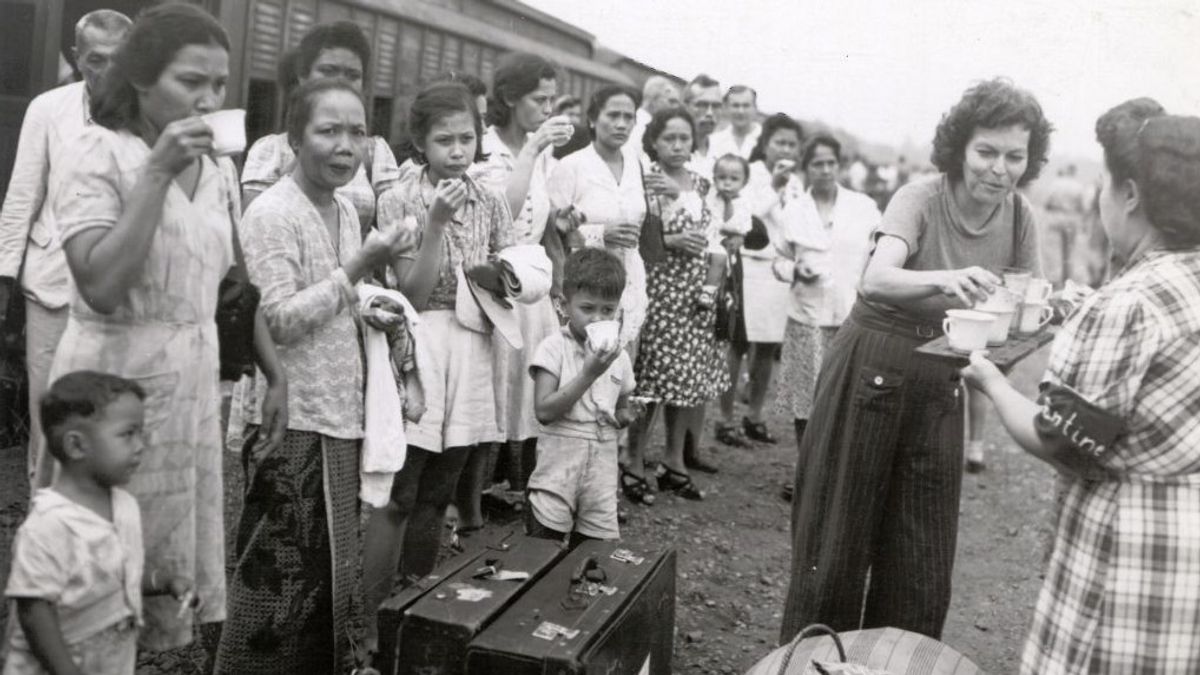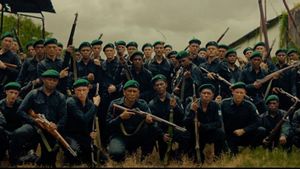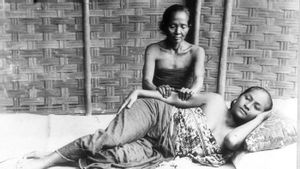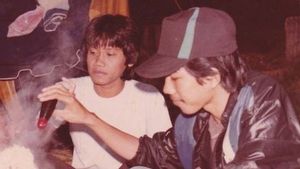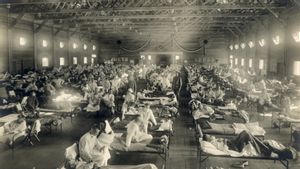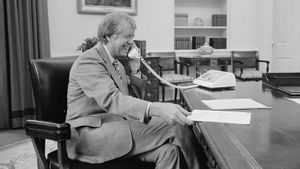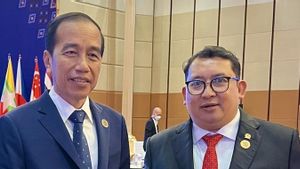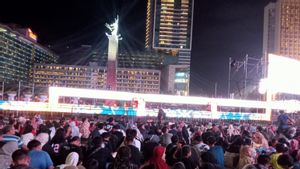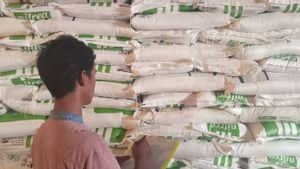JAKARTA - Indonesia is probably a nation of milk drinkers. Soekarno even included cows in the famous four healthy five perfect campaign. But our fondness for drinking cow's milk was actually infected by the Dutch colonialists. What's the story like?
History records that the culture of drinking milk, especially cows, is not a typical Indonesian habit. The Bumiputras even hated cow's milk. Cow's milk is considered a disgusting drink because it is considered the white blood of the four-legged animal.
And even though the cow population is so large, it stretches evenly from east to west of the archipelago, the natives at first did not see the benefits of cows as milk producers. Cows at that time were only used for two things: plowing the fields and as slaughter animals in certain celebrations or celebrations.
The culture of drinking milk came with the Dutch colonialists. Over time the culture was transmitted through the aristocrats and Priyayi (nobility in Javanese) who began to consume milk. The Lieutenant Governor of the Dutch East Indies, Thomas Stamford Raffles (1811-1816) agreed with this.

Raffles, who is known for researching the life of the archipelago, concluded that cow's milk was never consumed by the Bumiputras in the past. His analysis relies on the fact that most of the Bumiputras of the past were Hindus.
“Milking is not commonly practiced by the population, therefore not much milk is produced from livestock and it is also rarely consumed by the population. This is because they used to be Hindus".
"If they were introduced (early) to the benefits of milk, a lot of milk production would certainly be produced with a quality that is not different from other places," said Thomas Stamford Raffles in his masterpiece, The History of Java (1817).
In addition, as mentioned above, bumiputra considers milk to be the white blood of cows. Milk equals blood. Even equated with pus. Milk is also considered a disgusting drink. The lack of information regarding the benefits of milk adds to the stigma of milk.
"So when Javanese people see Europeans drinking milk, they think it is a disgusting drink", said historian, Fadly Rahman, quoted by Kompas.com.
Europeans were also the first generation to perpetuate the entry of milk into the archipelago. As colonizers, they brought with them European culture and spread throughout the country. The culture of drinking milk, one of them. The agenda to infect the culture of drinking milk is seriously being worked on by the Dutch.
One of the reasons is the low quality of milk produced by Indonesian cows. The first way the Dutch did it was to start importing quality dairy cattle from India, the Netherlands, Germany, and Australia in the 19th and 20th centuries.
Bumiputra is infected with milk
The effort to bring in dairy cows paved the way for the bumiputras to start enjoying cow's milk. The presence of the culture of drinking milk was finally imitated by the bumiputras.
However, those who enjoyed milk were still limited to the nobility and Priyayi (nobility in Javanese). They become people who are informed about the benefits of milk. At that time, milk was widely used as a healthy drink full of nutrition.
The popularity of milk is increasing as the promotion and advertisement of the benefits of milk spread by Europeans in various mediums, including newspapers. The advancement of the advertising industry helped bring milk to be increasingly accepted by many groups in the Dutch East Indies from the 19th century to the early 20th century.

They even began to call milk an integral part of the diet that can meet their daily nutritional needs. “Just look at Sunlight washing powder, Rohto eye drops, Vetsin cooking spices, Blue Band butter, Dunlop tires, Texaco car oil, Nona milk cap, Van Houten chocolate, Philips light bulbs, Brylcreem hair oil, it turns out that the advertisements have been around since that time".
"We can also imagine that at that time we had been targeted by various brands that no longer exist. Beer, for example, has various kinds. Look at the Java-Bier brand. Also the Njamoek drug. Look, there is the Tjap Ajam brand", added Seno Joko Suyono in the book Nostalgia Advertising Batavia (2011).
The emergence of dairy farming
Along with the incessant advertising, many dairy farms began to appear. South Bandung was chosen by the Dutch as a center for dairy farming. Haryoto Kunto, who is often called the Kuncen (caretaker in a sacred place) of the history of Bandung in the past, explains how massively the Dutch brought cattle to Bandung in his book, Wajah Bandoeng Tempo Doeloe (1984).
In Canning, for example. The dairy farms in the area are almost entirely Dutch-flagged. Call it De Friesche Terp, Almanac, Van Der Els and Big Man. Because of this, the dairy farm in Canning was nicknamed Friesland in Indie (the Friesland of the Dutch East Indies).
The name Friesland itself is taken from the popular dairy cow area in the Netherlands. Moreover, the popularity of milk then made the Dutch dairy farming business a promising business in its day.
“Dairy companies are almost entirely in the hands of Europeans. Only in a few small-scale milking areas managed by the Chinese. Indigenous people rarely interfere in the milking industry of this cow".

"Cows that were oriented as dairy cattle in the Dutch East Indies were mostly cattle of (Dutch) and Australian breeds, mixed breeds of these cattle and in some places, Bengal cattle have also been developed as dairy cattle", J. Stroomberg's story in the book Hindia-Belanda 1930 (2018).
At that time, the Bumiputras were in fact involved in the home industry for cow's milk. The proof can be seen from the proliferation of dairy farms in the Batavia (Jakarta) area, especially in Condet and Kuningan. The liters of milk are produced directly from the area.
In Kuningan, before becoming the economic Golden Triangle area, the Bumiputras began selling milk to Europeans in the Tanah Abang and Menteng areas. The milk is packaged in special bottles, which are then delivered to customers or other buyers.
“Most of them are cattle entrepreneurs, who on average have 4-5 head every morning and evening, hundreds of residents of Karet Kuningan, East Kuningan, Karet Pedurenan, and Setiabudi (Kampung Duku) riding bicycles carrying bottled milk, sent to customers in various places in Jakarta. Besides being traded", said Alwi Shahab in the book Maria Van Engels: Menantu Habib Kwitang (2006).
* Read other information about NUSANTARA HISTORY or read other interesting articles from Detha Arya Tifada
Other MEMORIES
SEE ALSO:
The English, Chinese, Japanese, Arabic, and French versions are automatically generated by the AI. So there may still be inaccuracies in translating, please always see Indonesian as our main language. (system supported by DigitalSiber.id)
